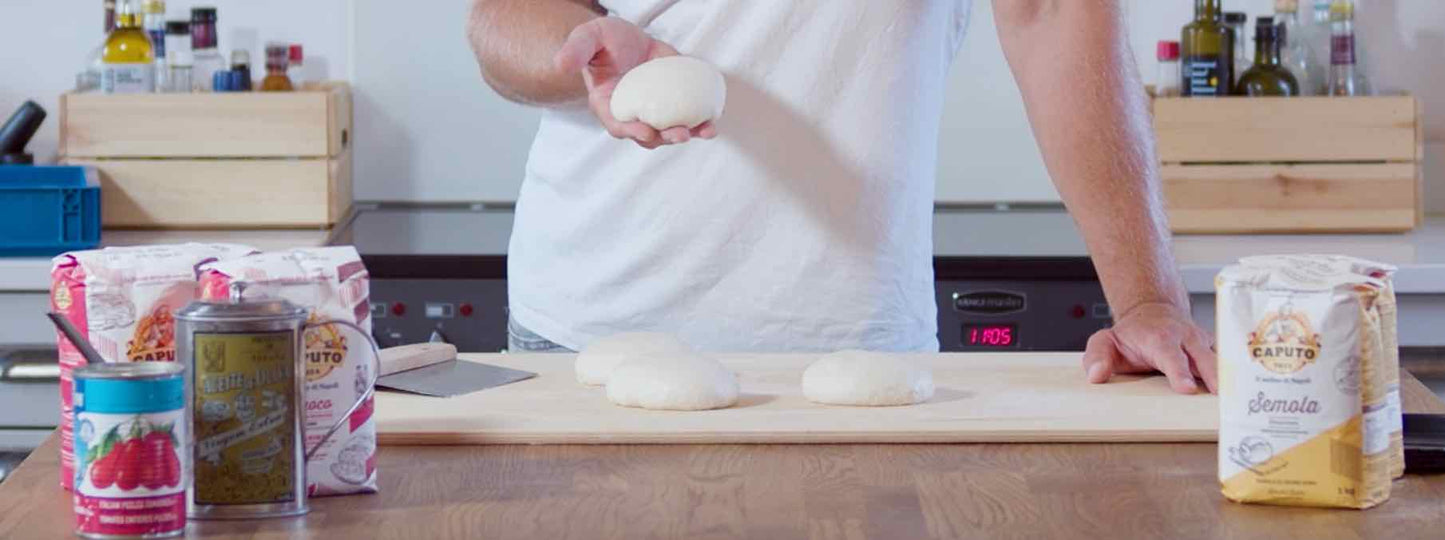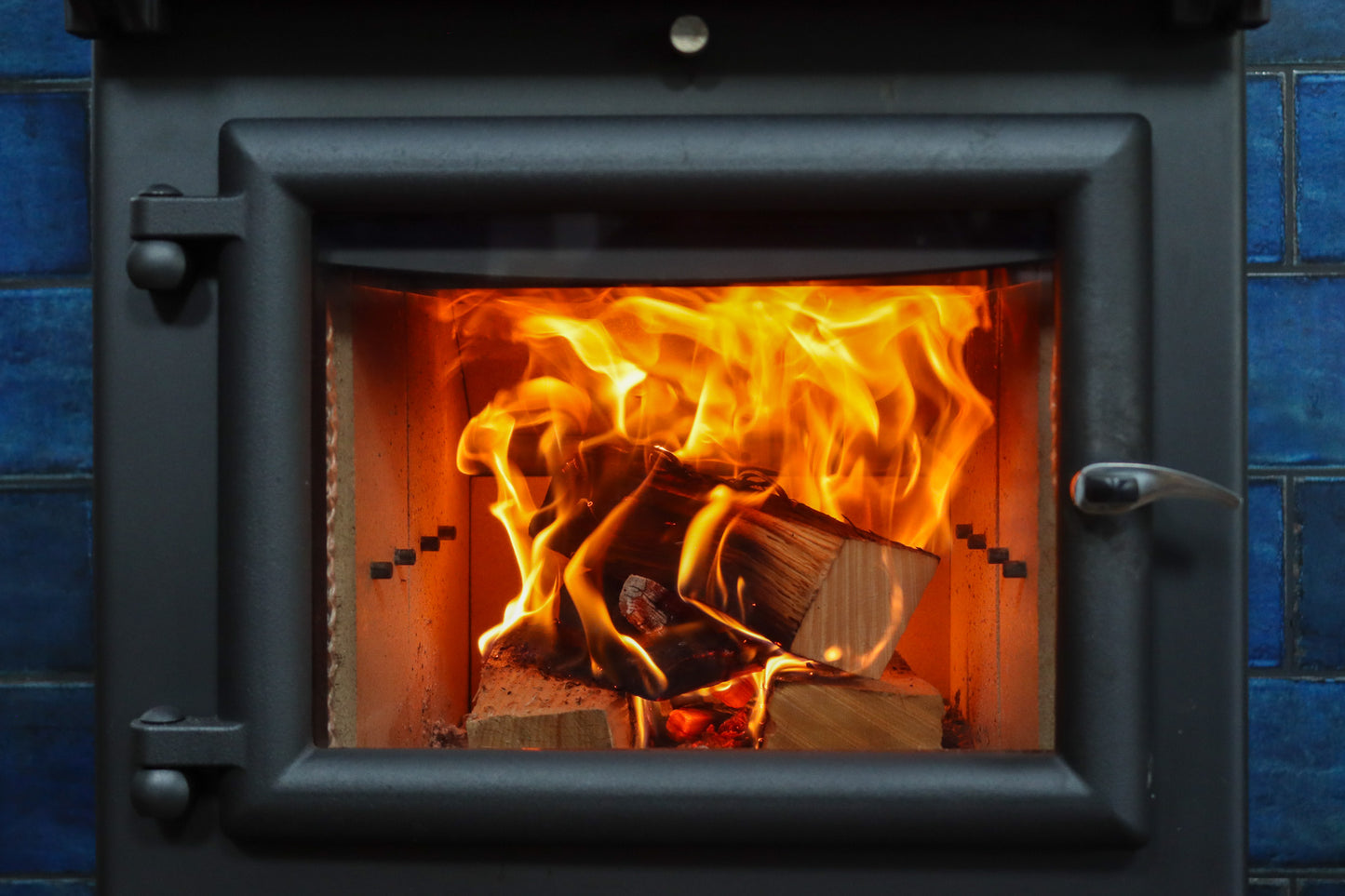
Over more than three years' cooking in wood fired ovens, I've been through lots of trial and error with dough recipes and making adjustments to my process.
I cook using various Ooni pizza ovens, both Gozney ovens and a large steel pizza oven, among others - and this dough is suitable for use in all of them.
How well you ball up your pizza dough can be the difference between a great pizza baking session and a failure, so how to ball up pizza dough reliably is a really important skill to have in your arsenal.
Video Guide - How to Ball Up Pizza Dough
Key Elements of Balling Up Pizza Dough
There are several reasons why the right technique is important when you turn your dough into doughballs.
After your bulk prove, your dough should be lively and full of air bubbles. When you ball up, your intention is to trap these lovely air bubbles inside your dough, leading to light, airy doughballs that allow you to make pizzas with soft, slightly crunchy crusts. Sealing your doughballs effectively is absolutely critical to trapping air inside them.
Balling up your pizza dough is also an opportunity to continue adding strength to your dough, by creating tension across the top surface of each doughball and aligning the gluten network in each ball. Forming nice tight doughballs at this stage will make it easier to stretch a round pizza when the time comes to bake.
Other Blogs You Might Like
Is this Pizza Dough Suitable for my Pizza Oven?
YES! This pizza dough can be used in all outdoor pizza ovens, including Ooni, Gozney, Delivita, Clementi, Igneus, Alfa Forni, Clementi or Skillcraft, among others.
There are several elements to consider when it comes to making dough for use in a pizza oven such as Ooni or Gozney, because they can heat up to over 400°C for authentic Neapolitan pizza.
Firstly, your dough should only ever contain four ingredients - water, flour, salt and yeast. Several recipes I used early in my pizza making experience contained oil or sugar, but I found out later these dough recipes were designed for baking in a home oven. When cooking Neapolitan style pizza at more than 400°C in your outdoor pizza oven, these ingredients will burn before your dough is cooked through, and make it much harder to make quality pizza.
What Does Pizza Dough Hydration Mean?
Don't be too intimidated by this! Even if you never understand it, this won't stop you making awesome pizza dough.
Baker's percentages simply measure your other ingredients as a percentage of the total flour in your recipe. So, if you use 1kg (1000g) of flour and want to make a 60% hydration dough, you will use 600g of water.
Your salt is also measured as a percentage of your flour, but keep it simple and let your phone do the hard work for you - head to 1m14s in the video to learn more about an app that will help unlock better pizza dough.
In the app, just increase the hydration of your pizza dough recipe, and it will work out the percentages of water, salt and yeast for you. Super simple, and you didn't even need to get your calculator out!
Do I Really Need to Make my Dough 24 Hours Ahead?
Of course you don't have to! But it makes a HUGE difference to the experience of making pizzas, as well as the final quality of your pizzas.
In the same size batch of dough you'll use 7g yeast for some same-day recipes versus 0.1g for the same amount of dough proved overnight. And sure enough, you can taste the lack of yeast in the longer-prove dough!
Same-day dough uses more yeast to accelerate every stage of the dough-making process, so slower proved dough has a much longer window of usability, which means if your plans change or your guests are late, you have much longer to use the dough before it becomes over-proved.
Slower proved dough is also more extensible and easier to stretch, helping to eliminate the problem of dough “springing back” when you stretch it.
Longer proving also makes for a lighter dough that's easier to eat once baked, which means you can eat more pizza. And you know what they say… more pizza, less problems!
What Size Doughball Should I Use for my Pizza Oven?
By watching my full dough video, you'll be able to scale my pizza dough process to make any amount of dough you need. But how big should your doughballs be?
Below are my doughball weights for Neapolitan style pizza:
12in pizza - 250g doughballs
14in pizza - 340g doughballs
16in pizza - 440g doughballs
In my opinion, authentic Neapolitan pizza gets pretty hard to make beyond 14 inches due to the difficulty in shaping and launching a pizza of this style & size. But by all means, give it a try and let me know how you get on!
Wood for Most Popular Pizza Ovens
Wood for Other Pizza Oven Models
Can't find your pizza oven in the list?
If you still aren't sure which pizza oven wood to buy, just send us an email on info@love-logs.com and we'll do our best to help!
Found this useful?
We'd love it if you shared it with your fellow pizza enthusiasts!




